|
The main woodwork of the frame is the same as for the
single-reel system.
Still there is a T- and L-handle, as is the reinforcement of the middle section.
The spindle mount has been modified and the L-handle now is aluminum covered.
L-handle
When taking in kite-line the T-handle usually rests against the body. The L-handle
points towards the loose end of the kite-line or towards the flying kite.
Especially taking in line with a kite pulling hard more or less will make the kite-line
act like a saw-blade. Deep cuts on the unprotected wooden handle are the result.
A length of aluminum pipe, pressed over the rounded off handle, settled the problem.
A fixed line guide? No, thanks! None of the kite reels I’ve built so far has
a line guide like a ring bolt or something comperable. Why? Because it would be impossible
to use the full width of wide reels. Of course the downside of it is that the line has to
be guided with the fingers, so you have to be careful - saw blade effect! But then again,
by running the kite line through your fingers you will feel possible damages before
it breaks and your kite disappears to “Nirwana”...
Centre knob
You can see the centre knob sitting at the large reel in picture #1; it is shown at
pictures #2 and #3, too. Its only job is to keep the reels on the spindle. So the knob
doesn’t need to be tightened too strong.
If the centre knob gets lost it can simply be replaced by a large washer and a wing nut.
Even building a new one shouldn’t be too difficult, since only a small wooden disc and
a so-called “4 Prong Tee Nut” are needed.
Spindle
A major change is the use of a bicycle hub with a drumbrake as a spindle. In its
first life the hub served the rear wheel of an old bicycle, that’s been stowed away in
a dark shed for many years.
Spindle mount
Unfortunately the axle was too short to fixate it at the frame by drilling a hole
through the wooden middle section and securing it with a nut. Therefore a metal plate
was bolted to the frame and the drill hole was widened. Now the axle could reach through
the corresponding hole in the metal plate and the nut be applied inside the
drill hole of the frame. (Of course there is a washer underneath the nut, too.)
The additional bolted-on lever, the so-called reaction arm, prevents the non-rotating
parts from being twisted when the drum brake is used.
The dia.10mm centre thread is welded-on to the (black colored) flat
steel, that in turn is bolted to the hub, along with the small wooden disc. When mounting
a reel on the spindle, the flat steel rod needs to be lined up with counterparting deepenings
inside the reel. This construction prevents the reel from twisting around at the spindle
when the drum brake is applied.
In picture #6 you can just see the hook-shaped tip of the brake lever.
For clarification picture #7 shows the spindle separated from the frame. While kiting
the break lever has to be pulled towards your body to apply the drum brake. Looking at
the picture that means the hook-shaped tip needs to be pulled downwards.
When originally mounted at a bicycle a bowden cable is hooked to the lever to pull it.
But in this very special case I could not find a satisfying solution so far. |
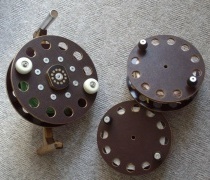
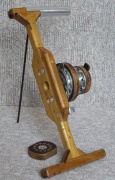
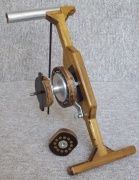
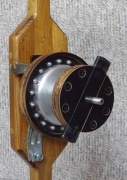
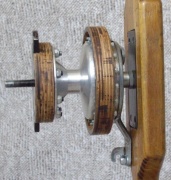
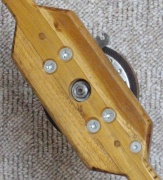
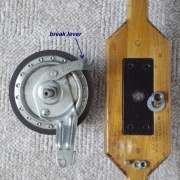
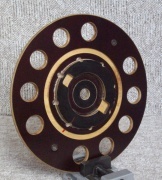
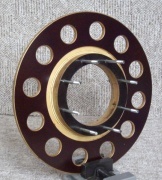
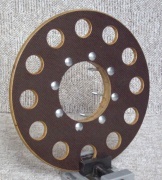
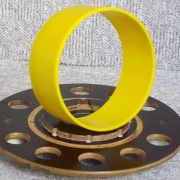
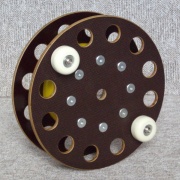
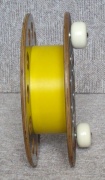
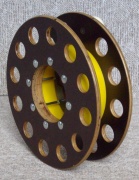
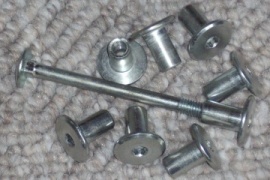
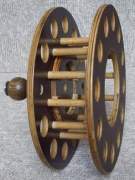
![eMail address mail to [KMS]](graphics_2/mail.gif)